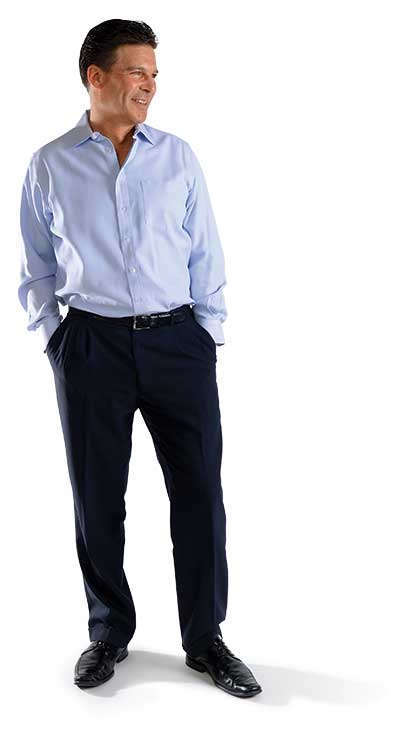
Andrea Armani is a professor in the USC Viterbi School of Engineering. Photo by Gus Ruelas.
When Physicians, Scientists and Engineers Come Together
Andrea Armani and Terry Sanger tackle problems from different directions, but their work shows the promise of convergent bioscience.
He’s a physician. She’s an engineer. Terry Sanger and Andrea Armani tackle problems from different directions, but their combined creativity shows the promise of convergent bioscience.

On cross-training in convergence
SANGER: When I went to school, I was interested in engineering, machine learning and computational neuroscience. And those fields had applications in the medical domain, so I went to medical school just to get the knowledge to apply engineering principles.
My research uses engineering methods to understand medical problems. Engineers are people who apply voltages and try to understand how things work mechanistically.
For a kid who can’t walk or talk, I try to figure out what broke, what that part of the brain is supposed to be doing, and what are my options to make it work better.
ARMANI: I came from a background of laser optics. As an undergraduate, I was in a physics lab that was beginning to build optical tweezers to study DNA, and I started to see how building a single instrument could open floodgates and enable discoveries. I thought that was incredibly cool, and I realized that instrumentaltion design was something I really wanted to pursue, so
I changed fields from physics to engineering, so I could do research that had a concrete goal.
Along the way, I also got a minor in biology. I wanted to have an understanding of biology so I could recognize the interesting questions, even if I couldn’t answer them myself. Most importantly, I wanted to be able to speak the language, and I find that helpful as I discuss problems with biologists.

On keeping an open mind
ARMANI: Both parties have to go into a discussion thinking that the other party has something to bring to the table. The biologist has to be open to the idea that the engineer is going to bring a new way to look at data, and the engineer has to be open to the idea that the biologist will bring new types of data. And that takes a lot of patience.
SANGER: You have to recognize that basic concepts of truth can be different, and it takes a lot of respect. Respect means you trust that fields that have different systems of logic and different cultures are nevertheless correct, even if it doesn’t match anything you’ve seen before. And that respect gives you the basis to learn not just the language but also the culture.
Working together: How did that happen?
ARMANI: [laughs] He proposed a problem for me, I came up with a solution, but it didn’t work.
SANGER: Here’s the situation: I wanted to know if you could noninvasively read out the electrical activity from your entire brain while you’re thinking or moving.
You came back in three days and said, “I think I have a solution.” And I said, “That’s not even possible!”
ARMANI: Well, technically, I did have a solution! The problem is, it didn’t work.
SANGER: I was very impressed. It was great. This is a huge, huge problem that may not even be solvable.
ARMANI: It is solvable. It will be solved.
SANGER: See, this is what makes this work—you believe that it’s solvable, and I believe that if it’s solved it will change the world, and so between the two of us, there’s a good chance something is going to happen.
Engineer or scientist: Pick a side?
ARMANI: The mindset of a scientist is very different from that of an engineer. An engineer is looking to discover something that has a finite application and at least has an immediate application in society, whereas a scientist is more looking to discover things, whether it’s to discover that a material is magnetic, or that a cell has a signaling protein. An engineer is interested in discovering, but for a purpose—to do something with it.
SANGER: Make it work. If it works, you’re done.
Why USC?
SANGER: Because USC cares deeply about interdisciplinary work. USC puts their money where their mouth is on this. Students have tremendous flexibility to move between departments. There’s a culture of collaboration and respect across field boundaries, so it’s a very good place to be for those of us who sit on many sides of fences.
ARMANI: USC is one of the few institutions that have a medical school and an engineering school under the same umbrella. That removes a lot of the internal, artificial, institutional boundaries present at other schools, and it allows you to put the research first. There are enough challenges in research without adding in administrative ones.
